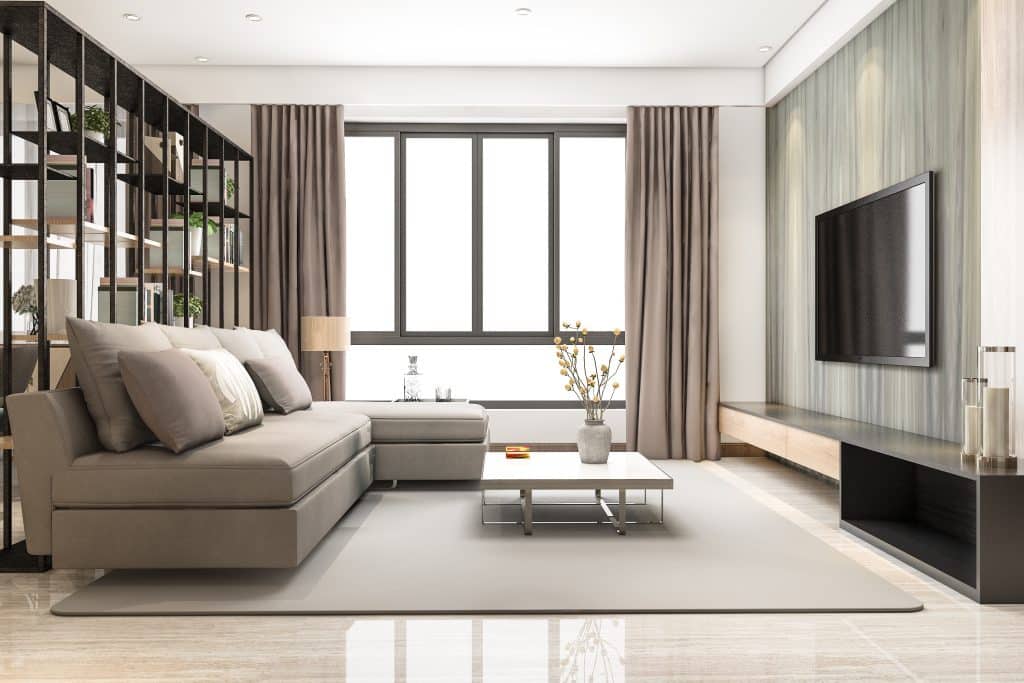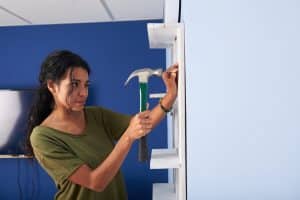DIY home upgrades 2025: Simple ideas to enhance your space

Advertisement

If you’re looking to transform your living space in 2025, DIY home upgrades offer the perfect opportunity to refresh your surroundings without breaking the bank.
Whether you’re tackling small projects or planning a more comprehensive renovation, simple changes can elevate your home’s comfort and style.
Let’s explore some innovative and inspiring ideas that will help you create the perfect atmosphere in your home.
Understanding the value of DIY home upgrades
Understanding the value of DIY home upgrades is essential for transforming your living space in a meaningful and cost-effective way.
Advertisement
These upgrades are not just about enhancing the aesthetics of your home; they significantly increase the functionality and comfort of your environment.
Even the smallest DIY home upgrades can make a big difference in the overall enjoyment of your space, making it more enjoyable to live in and even more appealing to others.
Why Choose DIY Projects?
One of the most compelling reasons to choose DIY home upgrades is the immense satisfaction that comes from completing a project on your own.
Advertisement
There’s something rewarding about rolling up your sleeves and making changes that reflect your unique style. This hands-on approach offers a level of personalization that hiring a professional cannot match.
Plus, many times, DIY home upgrades allow you to save on labor costs, which can be reinvested into other aspects of your home.
- Customization: DIY projects let you tailor upgrades specifically to your needs, from changing wall colors to building custom furniture.
- Cost Savings: With DIY home upgrades, you save money by skipping contractor fees, using affordable materials, and purchasing supplies directly.
Benefits of Upgrading Your Home
Upgrading your home offers several advantages, and DIY home upgrades are no exception. Not only can these projects improve your living environment, but they can also increase the market value of your property.
This is especially important if you plan to sell in the future, as prospective buyers are often drawn to homes with modern updates. Some of the most notable benefits include:
- Improved energy efficiency: Adding insulation, installing energy-efficient windows, or upgrading to energy-saving appliances through DIY home upgrades can reduce energy costs.
- Increased market value: Simple DIY home upgrades like a kitchen remodel or updated bathroom fixtures can raise your home’s value.
- Enhanced living comfort: Small changes, like creating more storage or improving lighting, can make your home more functional and comfortable.
- Personalized design choices: When you handle your own upgrades, you have complete control over design, from color schemes to furniture arrangements.
Engaging in DIY home upgrades also fosters creativity and personal expression. Each project you complete reflects your style, making your space feel even more like home.
This is particularly powerful in areas like your living room or kitchen, where small touches like new fixtures or a fresh coat of paint can completely alter the feel of the room.
DIY Inspiration
The internet is a treasure trove of DIY home upgrades inspiration. Whether you’re a beginner or an experienced DIYer, countless tutorials, videos, and tips are available to guide you through the process.
Many platforms, such as design websites and social media channels, offer step-by-step instructions that make these projects accessible to everyone.
Additionally, completing DIY home upgrades with family or friends can turn the task into a fun social activity.
Not only will you get help with the work, but you’ll also bond over shared creativity and problem-solving. The collaboration often leads to more innovative ideas and solutions.
Planning Your DIY Home Upgrades
Before jumping into any DIY home upgrades, it’s crucial to make a solid plan. Start by identifying which areas of your home need the most attention, whether it’s outdated furniture, insufficient lighting, or a cluttered layout.
Prioritize these areas based on urgency and your budget.
- Budgeting: Be realistic about your financial resources. Look for ways to save, such as choosing affordable materials or completing projects in stages.
- Preparation: Research thoroughly before purchasing any supplies or starting work. This ensures you don’t waste time and money on unnecessary tools or materials.
Creating a clear plan will help make your DIY home upgrades more efficient and less stressful.
You’ll know exactly what you need to do, which materials to buy, and how much time each project will take, leading to a more successful and enjoyable renovation experience.
Top trends in home upgrades for 2025
As we look toward 2025, DIY home upgrades are evolving to meet the demands of a more sustainable, functional, and stylish lifestyle.
Homeowners are increasingly focusing on making their living spaces smarter, more efficient, and eco-friendly.
Staying ahead of these trends not only improves your home but also adds value, helping your space stand out in an ever-competitive real estate market.
Let’s explore some of the most exciting trends that will shape the future of DIY home upgrades.
Sustainable Materials for Home Upgrades
One of the most significant trends in DIY home upgrades for 2025 is the shift toward sustainable materials.
As homeowners become more conscious of their environmental footprint, eco-friendly choices are becoming essential in home renovation projects.
Not only do these materials reduce your carbon impact, but they also offer long-lasting durability and timeless style, which is perfect for DIY home upgrades.
Bamboo Flooring
Bamboo flooring is gaining immense popularity due to its sustainability, durability, and aesthetic appeal. Bamboo is fast-growing, making it an eco-friendly choice for DIY home upgrades.
Its natural beauty and strength rival hardwood, and it’s highly resistant to wear, making it perfect for high-traffic areas in DIY home upgrades.
Recycled Metal and Glass
Incorporating recycled materials in your home is a fantastic way to reduce waste while enhancing your decor. Recycled metal and glass are used in fixtures, lighting, and furniture, providing a modern touch that’s both eco-friendly and stylish.
These materials add texture and sophistication to your home while supporting a greener lifestyle through DIY home upgrades.
Low-VOC Paints
Volatile Organic Compounds (VOCs) in traditional paints can release harmful fumes, which negatively affect indoor air quality. Low-VOC paints are an excellent alternative, offering a safer and healthier environment.
These paints are especially favored in homes where children or sensitive individuals reside. By choosing low-VOC paints for your DIY home upgrades, you contribute to a greener and healthier home.
Incorporating these sustainable materials into your DIY home upgrades not only helps protect the planet but also adds value to your space, making it a more appealing and responsible choice for future buyers.
Smart Home Features for a Connected Lifestyle
The integration of smart home features continues to be a top trend for homeowners in 2025. These DIY home upgrades are revolutionizing the way we live by making daily tasks more convenient and efficient.
Smart technology is no longer a luxury; it’s becoming a necessity in modern homes.
Incorporating these features into your DIY home upgrades enhances comfort, convenience, and energy efficiency, all while adding a modern touch to your living space.
Smart Thermostats
These devices allow homeowners to control the temperature of their home remotely, ensuring maximum comfort and energy efficiency.
Smart thermostats learn your preferences and adjust temperatures based on your routine, potentially lowering energy costs and reducing your home’s carbon footprint through DIY home upgrades.
Automated Lighting
Automated lighting systems are becoming increasingly popular as they provide convenience and energy savings. These systems allow you to control your lights remotely, set schedules, or even adjust lighting with voice commands.
Smart lighting can help create the perfect ambiance and save on electricity bills by ensuring lights are only on when needed in your DIY home upgrades.
Advanced Security Systems
The demand for advanced smart security systems is growing, as they offer peace of mind and greater control over the safety of your home.
These systems often include cameras, motion detectors, and alarms that can be accessed remotely via smartphone, allowing homeowners to monitor their property from anywhere as part of DIY home upgrades.
Voice-Controlled Systems
Smart speakers and assistants like Amazon Alexa or Google Assistant allow homeowners to control various aspects of their home with simple voice commands.
Whether it’s adjusting the thermostat, controlling the lights, or even playing music, these voice-activated systems bring an extra layer of convenience and innovation to your DIY home upgrades.
By integrating these smart home features, you can optimize your home for the future, improving both efficiency and comfort while ensuring a more connected lifestyle through DIY home upgrades.
Open Floor Plans: Embracing Spaciousness and Flexibility
Open floor plans continue to thrive as one of the most popular trends in DIY home upgrades for 2025. Homeowners are increasingly drawn to layouts that create flexibility, spaciousness, and a natural flow between rooms.
Removing walls and creating open-concept spaces fosters better interaction and promotes natural light, making homes feel larger and more inviting with DIY home upgrades.
Seamless Flow Between Rooms
Removing non-load-bearing walls to create an open layout allows different areas of the home to interact seamlessly.
This design approach creates a more connected environment, where living spaces feel larger and more flexible, especially with DIY home upgrades.
Maximized Natural Light
Open floor plans allow for more windows and fewer barriers, letting natural light flood the space. More light not only makes your home feel airy and bright but can also enhance your mood and reduce your energy needs in DIY home upgrades.
Increased Social Interaction
Open spaces encourage interaction and provide ample room for entertaining guests. Whether you’re hosting a dinner party or enjoying family time, open layouts offer more space for everyone to gather together, all thanks to your DIY home upgrades.
If you’re considering DIY home upgrades, removing walls to create an open floor plan can be a transformative change. It allows for greater flow and flexibility in your space, making it perfect for families and modern lifestyles.
Outdoor Living Spaces: Extending Your Home’s Reach
Finally, outdoor living spaces are becoming increasingly important as homeowners look to expand their usable square footage.
In 2025, more people are designing their backyards to function as additional living areas, allowing them to enjoy the outdoors without leaving home.
Adding DIY home upgrades to your outdoor space makes it feel like a true extension of your home.
Patios and Decks
Adding a patio or deck provides a comfortable and stylish outdoor area for relaxation and entertaining. These spaces are perfect for grilling, dining, or simply enjoying the fresh air.
Well-designed outdoor living areas help blend the indoor and outdoor experience through DIY home upgrades.
Outdoor Kitchens
Outdoor kitchens are rapidly gaining popularity, as they offer a convenient place to prepare meals while enjoying the outdoors.
Whether it’s a simple grilling area or a fully equipped kitchen, these spaces make entertaining outdoors easier and more enjoyable through DIY home upgrades.
Landscaping and Green Spaces
Expanding your garden or creating a lush backyard retreat enhances the beauty of your home and promotes relaxation.
Thoughtful landscaping can transform your outdoor space into an inviting oasis that reflects your style, all with the help of DIY home upgrades.
Upgrading your outdoor living spaces can help you get more out of your home, providing additional spaces for relaxation and entertainment.
Outdoor living spaces are becoming essential in modern homes, making them an important part of DIY home upgrades in 2025.
Step-by-step guide to planning your upgrades

Planning your DIY home upgrades may feel like a daunting task, but breaking it down into manageable steps can simplify the process and make it much more achievable.
By following a clear and structured guide, you’ll ensure that your projects stay within budget, run smoothly, and ultimately deliver the results you’re looking for.
Whether you’re planning small tweaks or larger renovations, a well-thought-out plan will set you up for success.
Set Your Budget
The first step in planning any DIY home upgrades is to establish a clear and realistic budget. Understanding how much you can spend will influence the scope of your projects and help you prioritize your most important needs.
Budgeting also helps you avoid overspending and ensures that you can complete your upgrades without financial strain.
Review Your Finances
Start by reviewing your financial situation to determine a realistic budget. Look at your monthly income and expenses to figure out how much you can afford to spend on DIY home upgrades.
Set Aside Extra Funds for Unexpected Expenses
It’s always wise to set aside extra money in case of unexpected costs. Home renovation projects often come with surprises, such as discovering hidden problems or needing additional materials.
Having a buffer will prevent you from having to pause your projects midway through.
Research Average Costs for Common Upgrades
Before you start spending, research the typical costs for the upgrades you’re considering. This will help you gauge your budget and ensure that your plans align with the amount you can afford.
For instance, if you’re thinking about upgrading your kitchen, get an idea of what new cabinets, countertops, and appliances typically cost.
Having a solid budget in place gives you a framework for what is achievable. Be sure to keep your budget flexible to accommodate any changes or unforeseen expenses that may arise during your DIY home upgrades.
Identify Your Needs and Goals
Once your budget is set, the next step is to determine your needs and goals for your DIY home upgrades. Are you looking to improve functionality, increase energy efficiency, or give your home a fresh aesthetic?
Setting clear and specific goals will help guide your decision-making process and ensure that your upgrades align with your vision for your home.
Create a List of Areas in Your Home That Need Attention
Start by identifying which areas of your home need the most attention. Whether it’s a cramped kitchen, a dated bathroom, or an underutilized living room, creating a list will help you visualize where to focus your energy and resources.
Prioritize Your Upgrades
Once you’ve identified your needs, prioritize the spaces that need the most immediate attention. For example, upgrading a leaky roof might take precedence over redecorating a guest room.
Consider how each area impacts your daily life and make your choices accordingly.
By having a clear set of goals, you can focus your time and energy on the DIY home upgrades that matter most and avoid spreading yourself too thin.
Research and Plan Your Projects
With your goals defined, it’s time to do some research on the options available for your DIY home upgrades. The more informed you are, the better the results will be.
Use Online Resources and Visit Home Improvement Stores
Take advantage of the wealth of online resources available. Websites, blogs, and tutorials can provide helpful tips and step-by-step guides on how to tackle various home projects.
Visiting home improvement stores will also give you a firsthand look at materials and supplies, allowing you to make informed choices for your upgrades.
Gather Inspiration from Design Websites and Magazines
It’s also helpful to gather inspiration from design websites, magazines, and social media platforms like Pinterest and Instagram. Collecting ideas will help you define your style and give you a clear direction for your DIY home upgrades.
Create a Vision Board
To visualize your upgrades, create a vision board or digital mood board. This will help keep your focus on your desired outcome and give you a concrete reference point as you move forward with your project.
By doing thorough research and planning, you can ensure that your DIY home upgrades will be successful and aligned with your vision.
Create a Timeline
Developing a realistic timeline is essential for ensuring that your DIY home upgrades stay on track. Timelines help prevent delays and keep you motivated to reach your goals in a timely manner.
Estimate Time for Each Project
For each upgrade, determine how much time it will realistically take to complete. Factor in the time needed for shopping, prepping, and finishing each step of the project.
Set Deadlines
Setting deadlines for each phase of your DIY home upgrades helps keep you accountable and focused. Be sure to plan for any unforeseen delays, but stick to your deadlines as much as possible to avoid procrastination.
Build a Buffer Into Your Timeline
Allow for flexibility in your timeline. Unexpected challenges can arise during home improvement projects, and having a buffer period will help ensure you don’t feel rushed or overwhelmed.
A realistic timeline will reduce stress and help keep your DIY home upgrades on track.
Gather Resources and Materials
Before you dive into your DIY home upgrades, make sure you have all the necessary resources and materials at hand. Having everything you need before you start will prevent delays and ensure you can work without interruptions.
Check Your Inventory Before Purchasing
Before heading to the store, check your existing inventory of tools and materials. You may already have some items at home, which will save you money and time.
Create a Shopping List
Make a detailed shopping list of the materials and tools needed for your DIY home upgrades. This will help you stay organized and ensure you don’t forget any important supplies.
Enlist Help from Friends or Family
Consider involving friends or family members in your DIY home upgrades. Not only will it make the process more enjoyable, but it will also help get the work done faster and more efficiently.
Cost-effective materials for your DIY projects
Choosing cost-effective materials for your DIY projects is essential for staying within budget while achieving excellent results.
Whether you’re renovating a room, updating furniture, or adding personal touches to your home, selecting affordable materials can make a significant difference in your overall project costs.
Many cost-effective options not only save money but also enhance the aesthetic and functionality of your space.
Reclaimed Wood: Sustainable and Stylish
One of the most popular and cost-effective materials for DIY projects is reclaimed wood. Using salvaged wood adds a unique character to your projects while being environmentally friendly.
This versatile material can be used for various applications, including:
Furniture
Reclaimed wood is perfect for creating one-of-a-kind furniture pieces, such as tables, chairs, and coffee tables. The natural grains and imperfections add charm, making your furniture stand out in any room.
Accent Walls
An accent wall made from reclaimed wood can instantly transform the look of any space. It brings warmth, texture, and an organic feel, creating a stunning focal point for your home.
Decorative Shelves
Reclaimed wood is an excellent choice for building shelves to display books, plants, or decorative items. It provides a rustic, earthy feel and works well in any room.
Reclaimed wood is often available at lower prices than new lumber, making it not only a sustainable option but also a budget-friendly choice for your DIY projects.
Paint and Stains: Budget-Friendly Transformation
One of the most affordable and impactful ways to refresh your home is with paint and stains. Quality paint and stains can completely change the look of a room or furniture without requiring a hefty investment.
Paint for Furniture and Walls
A fresh coat of paint can breathe new life into old furniture or walls. Opt for paint from reputable brands that offer good coverage to ensure a smooth, professional-looking finish.
Look for sales or discounts at local hardware stores to stretch your budget further.
Stain for Wood Surfaces
Stains can enhance the natural beauty of wood and offer a protective layer. Applying a stain to wooden furniture, cabinets, or trim can revitalize tired surfaces, making them look brand new without the high cost of replacements.
Staining is particularly effective on furniture made from reclaimed wood or other raw materials, adding richness and depth to the finish.
Use Leftover Paint
Don’t forget about the leftover paint from previous projects! You can use it for touch-ups, smaller projects, or even experiment with accent walls. This simple solution ensures that you make the most out of your investment in paint.
Both paint and stains are affordable options that can deliver outstanding results with minimal effort, making them perfect for your DIY home upgrades.
DIY-Friendly Fabrics: Affordable and Functional
For DIY projects that involve upholstery or soft furnishings, choosing budget-friendly fabrics can help you refresh your space without exceeding your budget.
Many fabric stores offer discounted or end-of-season fabrics that are perfect for projects like cushions, curtains, and pillows.
Durability
When selecting fabrics, prioritize durability. Choose options that can withstand wear and tear, especially for high-use items like chairs, cushions, or curtains.
Fabrics like cotton, linen, and polyester blends offer durability at affordable prices.
Match Your Decor Style
Select fabrics that complement your home’s existing decor style. Whether you’re aiming for a modern, bohemian, or classic look, you can find budget-friendly fabrics in various colors, textures, and patterns.
Use patterns and textures creatively to add character and sophistication to your space.
Utilize Fabric Remnant Sections
Many fabric stores offer remnant sections where you can purchase small quantities of fabric at reduced prices.
This is a great way to get unique, high-quality fabric for smaller projects like pillows or throws without breaking the bank.
Using budget-friendly fabrics wisely can help rejuvenate your home’s soft furnishings, transforming the space with a fresh look and added comfort, all while staying within your budget.
Maximizing your space with smart upgrades

Maximizing your space with smart upgrades is essential for creating a functional and enjoyable living environment, especially when you’re looking to improve your home without taking on major renovations.
Whether you’re in a small apartment or a larger home, using available space efficiently can dramatically enhance both the aesthetics and functionality of your living space.
Fortunately, there are several practical strategies to make the most of your space while keeping it comfortable and stylish.
Prioritize Multi-Functional Furniture
One of the best ways to maximize your space is by investing in multi-functional furniture.
These pieces serve more than one purpose, allowing you to save space without sacrificing comfort or style. Here are a few options that can significantly increase your usable space:
Sofa Beds
A sofa bed is perfect for homes with limited space. It provides comfortable seating during the day and easily converts into a bed at night.
This dual-functionality is especially useful for guest rooms or small apartments.
Storage Ottomans
Storage ottomans are incredibly versatile. They can function as footrests or additional seating, and at the same time, they provide hidden storage for extra pillows, blankets, or other household items.
This allows you to declutter while adding practical seating options to your space.
Expandable Tables
Expandable dining tables offer a flexible solution for dining areas. These tables can be extended when you have guests and easily reduced when not in use.
This helps you accommodate more people without needing a large, permanent table taking up precious space.
Incorporating multi-functional furniture into your home will transform it into a more practical, comfortable, and organized space, perfect for maximizing every inch of your living area.
Utilize Vertical Space
One of the most underutilized areas in most homes is vertical space. By thinking upwards, you can greatly expand the storage and display areas in your home.
Adding shelves, wall-mounted furniture, and hanging storage allows you to save valuable floor space while keeping your home organized.
Wall Shelves
Installing wall shelves is a simple and effective way to store books, display decorative items, or even keep kitchen essentials like spices and utensils.
This not only frees up your floor space but also adds a stylish touch to your walls.
Hooks and Racks
Utilizing hooks and racks can further enhance vertical storage. Hooks for coats, bags, or keys can be installed near the entryway, while racks in the kitchen or bathroom can store items like towels, utensils, or cleaning supplies.
Overhead Storage Units
In areas like garages, basements, or closets, adding overhead storage units allows you to store seasonal items or rarely used equipment. This keeps your floor space clear while providing easy access to the things you need.
Utilizing vertical space not only frees up floor area but also creates the illusion of larger rooms, making your home feel more open and airy.
Think About Room Dividers
Room dividers are an excellent solution for creating distinct areas in an open-concept space without permanently altering the layout.
This is particularly helpful for multifunctional spaces, such as living rooms that double as home offices or bedrooms that serve as both sleeping and entertainment areas. Here are a few options for effective room dividers:
Folding Screens
Folding screens are an affordable and flexible option for dividing spaces. They are easy to move and store when not in use, making them ideal for creating temporary divisions or separating work areas from living spaces.
Shelving Units as Dividers
Shelves can serve as both a divider and storage unit, providing an open yet defined space. Shelving units can store books, plants, or decorative items while acting as a barrier between different areas in a room.
Curtains
Installing curtains or drapes on rods can quickly separate areas when needed. Curtains are a great choice for creating privacy without permanent changes to your layout.
You can pull them open to create an expansive space or draw them to create a cozy, separated area for work or rest.
Strategically using room dividers allows you to define spaces within larger rooms, enhancing privacy and functionality without the need for costly renovations.
Incorporate Smart Technology
Smart technology can significantly enhance the efficiency of your living space, helping you maximize the functionality of every room.
With devices that can be controlled remotely or programmed to operate automatically, you can use your home more effectively while saving time and energy.
Smart Lighting
Smart lighting systems allow you to control the brightness and even the color of your lights based on your needs.
Whether you want bright lights for tasks or soft lighting for relaxation, smart lighting ensures your space is always just right. It can also be programmed to turn off when not needed, helping you save energy.
Smart Thermostats
Smart thermostats optimize energy use by learning your preferences and adjusting the temperature accordingly.
You can control the temperature remotely and even set it to adjust based on the time of day or your schedule, making your home more energy-efficient and comfortable.
Voice-Activated Assistants
Voice-controlled devices, such as Amazon Alexa or Google Assistant, allow you to manage various aspects of your home with simple voice commands.
From adjusting the thermostat to controlling lights and security systems, voice assistants make your home smarter and more convenient to operate.
Incorporating smart technology into your DIY home upgrades can lead to significant improvements in convenience, energy efficiency, and overall functionality.
It’s an excellent way to make the most of your space while keeping up with the modern demands of a smart home.
In 2025, DIY home upgrades offer endless possibilities for transforming your living space into a more comfortable, efficient, and stylish environment.
Whether you’re looking to enhance your home’s energy efficiency, increase its market value, or simply create a more personalized and functional space, DIY home upgrades allow you to achieve these goals without spending a fortune.
By carefully planning your upgrades, researching cost-effective materials, and incorporating smart technology, you can significantly improve the functionality and aesthetics of your home.
Whether you’re tackling small projects like repainting a room or larger ones like installing new flooring, each DIY home upgrade you complete adds value and enhances your living experience.
Additionally, DIY home upgrades allow you to express your unique personality and creativity.
Unlike standard home renovations, these projects give you the freedom to design and implement changes that truly reflect your style, while staying within your budget.
The satisfaction of completing a DIY home upgrade is unmatched, and the results are often more rewarding than hiring professionals.
So, if you’re ready to dive into the world of DIY home upgrades, the potential is limitless.
Whether you’re upgrading your kitchen, redesigning your bathroom, or adding smart home features, the right project can make all the difference in how you experience your living space.
Don’t hesitate to explore the many resources available online to guide and inspire you.
For more DIY home upgrades inspiration and step-by-step guides, visit these helpful resources:
FAQ – Frequently Asked Questions about Maximizing Space with Smart Upgrades
What are some examples of multi-functional furniture?
Examples include sofa beds for seating and sleeping, storage ottomans that double as tables, and expandable dining tables that can adjust to your needs.
How can I utilize vertical space in my home?
Install shelves, hooks, or wall-mounted organizers to keep items accessible while freeing up floor space.
What are the benefits of using room dividers?
Room dividers can create privacy, separate activities, and define different spaces without permanently altering your home’s layout.
How can smart technology enhance my living space?
Smart technology can automate lighting, control temperature, and provide security features, improving both convenience and energy efficiency.
Liked the article?





